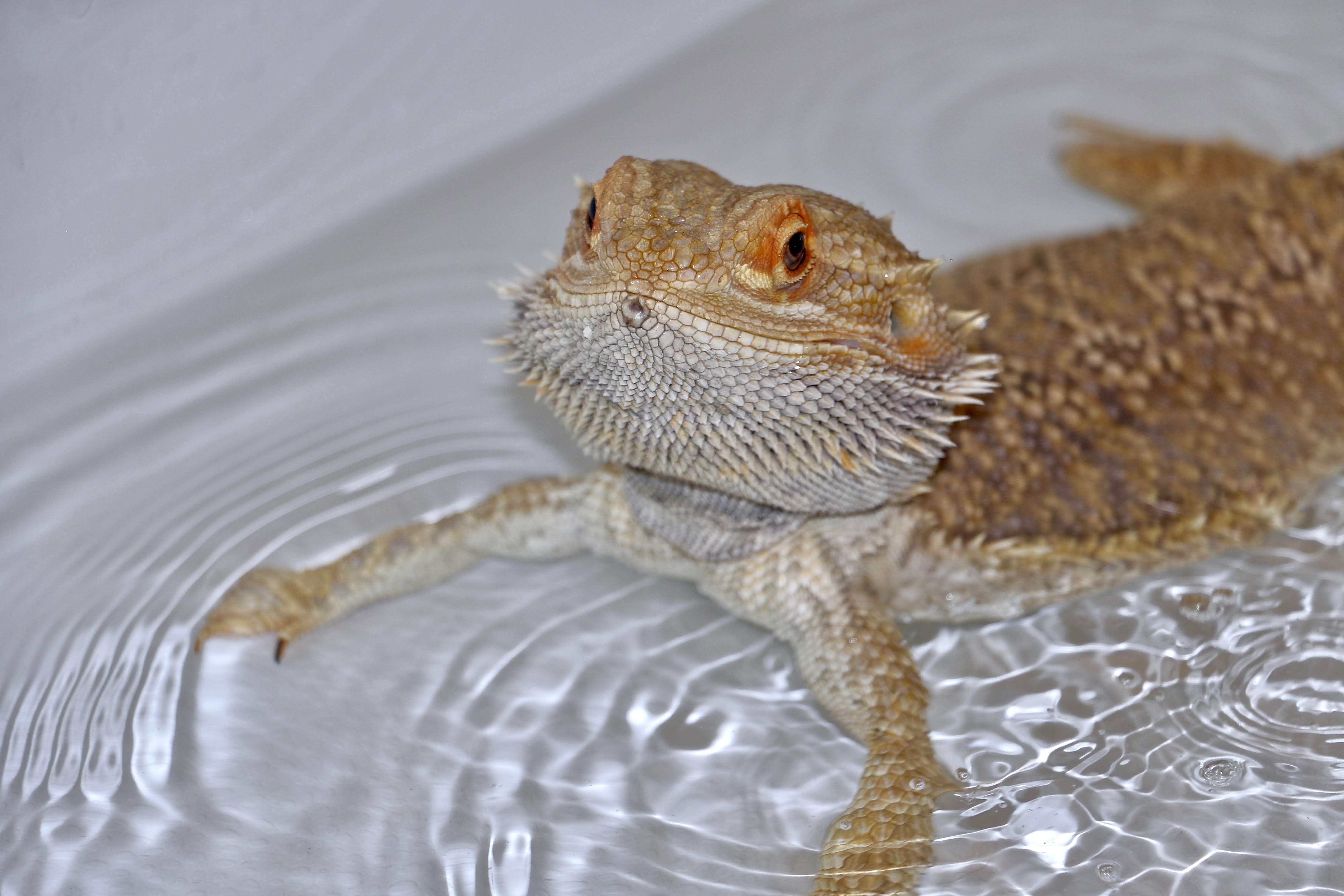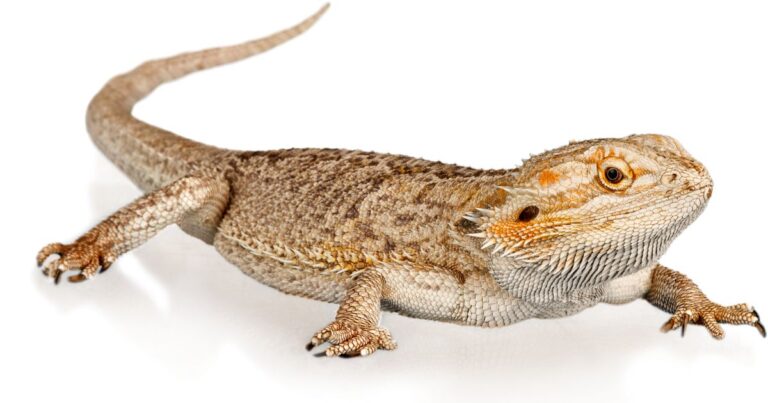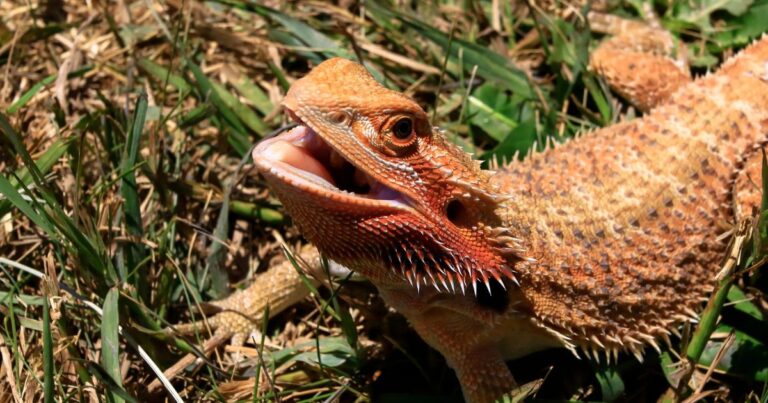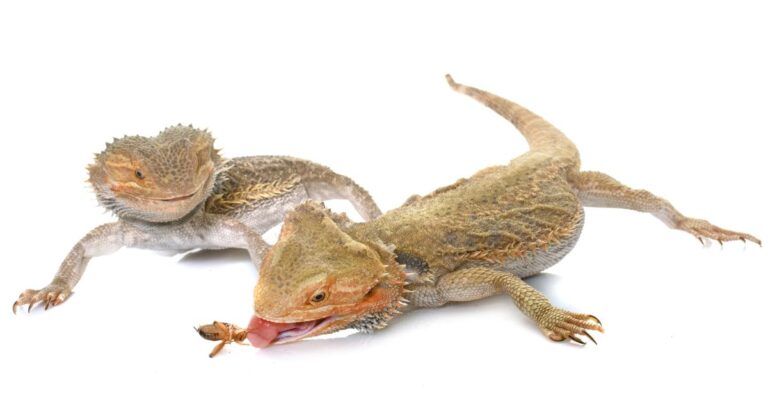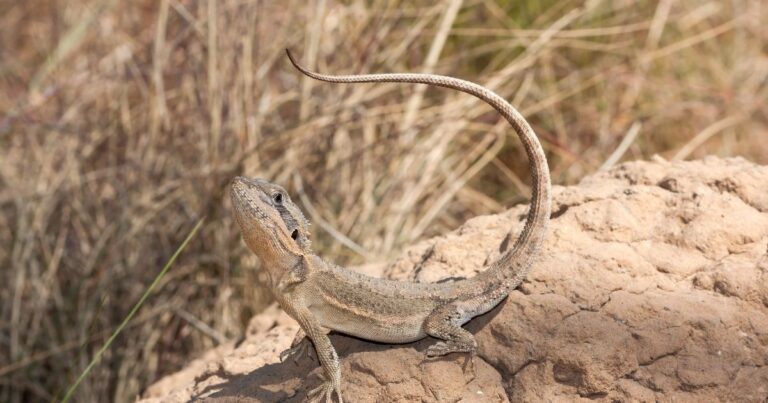Bearded Dragon Dehydration and Hydration Issues
Table of Contents
Key Summary Table: Bearded Dragon Dehydration and Hydration Issues
| Signs of Dehydration | Ways to Hydrate | Fastest Hydration Methods |
|---|---|---|
| Wrinkled or sagging skin | Misting with water | Giving a bath |
| Sunken eyes | Providing a shallow water dish | Misting |
| Lack of energy | Feeding hydrating foods | Feeding hydrating foods |
| Decreased appetite | Monitoring enclosure humidity | – |
“Bearded dragon dehydration and hydration issues” might sound like a mouthful, but it’s a topic every dragon lover should know about! In this article, we’ll explore how to spot dehydration in our scaly friends, and share some super effective hydration tips. So, buckle up, dragon enthusiasts, we’re in for a wild, water-filled ride!
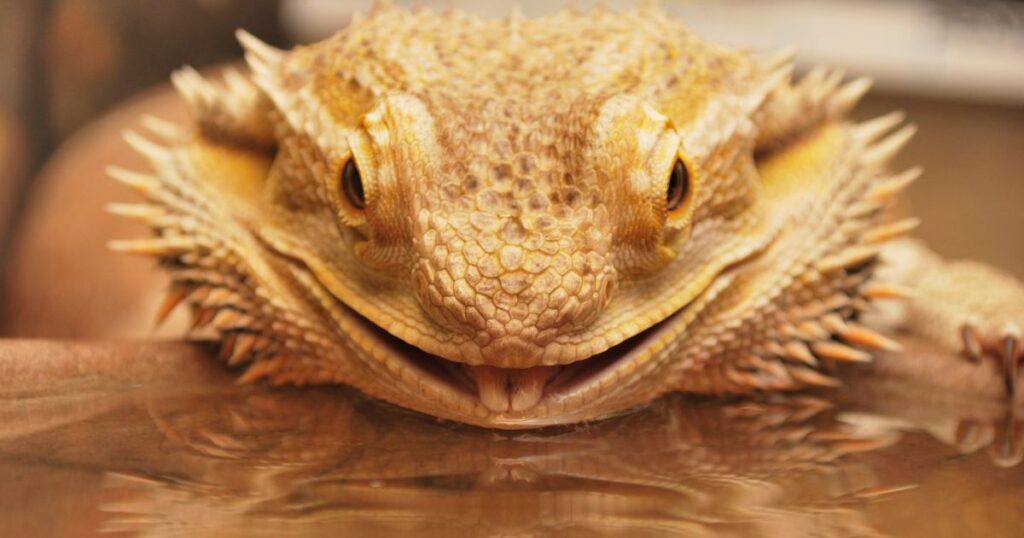
Introduction
Bearded dragon dehydration and hydration issues are a topic that’s close to my heart. As a bearded dragon owner, I’ve learned that hydration is as crucial for our scaly friends as it is for us humans. Just like we need water to keep our bodies functioning properly, bearded dragons also need adequate hydration to stay healthy and active.
Spotting the signs of dehydration early can make a huge difference. It’s about being observant and responsive to your bearded dragon’s needs.
In my journey with Gilbert, my bearded dragon, I’ve had to learn about the importance of hydration and how to spot signs of dehydration. It’s been a fascinating journey, full of discoveries and learning experiences. And today, I want to share some of those insights with you.
So, if you’re a fellow bearded dragon enthusiast, or if you’re just curious about these amazing creatures, stick around. We’re about to embark on an exciting exploration of bearded dragon hydration and dehydration issues.
Understanding Dehydration in Bearded Dragons
| Effect | Description |
|---|---|
| Impacted Digestion | Dehydration can slow down digestion, leading to constipation or impaction. |
| Skin Health | Dehydrated dragons may have dry, wrinkled skin. |
| Energy Levels | Dehydration can cause lethargy and decreased activity. |
Dehydration in bearded dragons can be a serious issue. It can lead to health problems and, in severe cases, can even be life-threatening. But what exactly happens when a bearded dragon is dehydrated?
Well, just like in humans, dehydration in bearded dragons can affect their bodily functions. It can impact their digestion, skin health, and overall energy levels. A dehydrated bearded dragon may become lethargic, lose its appetite, and show signs of discomfort.
But the good news is, with proper care and attention, dehydration in bearded dragons can be prevented and treated. And that’s what we’re going to discuss in the next sections.
Causes of Dehydration in Bearded Dragons
- Insufficient water intake
- Low humidity in the enclosure
- High temperatures in the enclosure
- Illness or disease
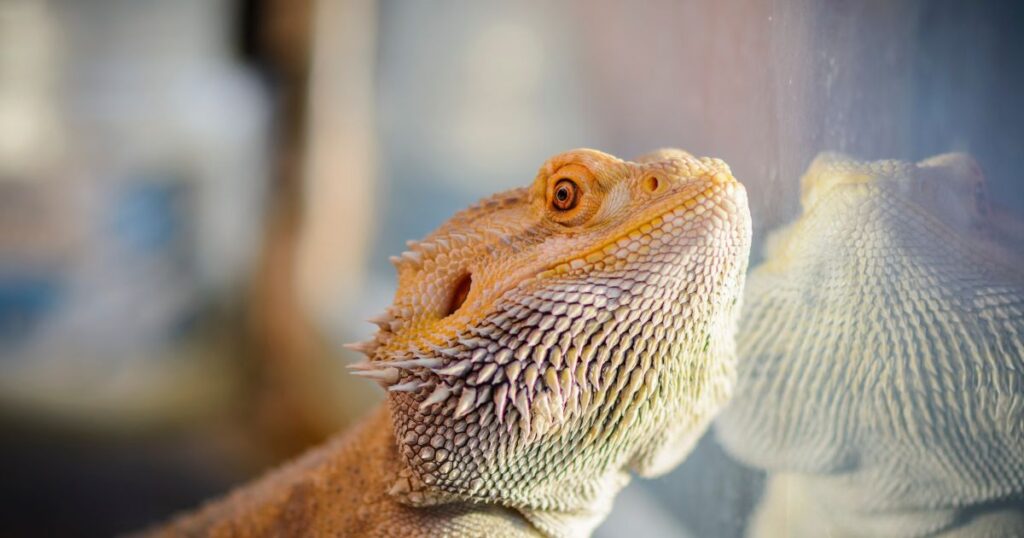
Spotting the Signs of Dehydration
Spotting the signs of dehydration early can make a huge difference. It can help you take action quickly and prevent further complications. But what are these signs?
One of the most common signs of dehydration in bearded dragons is wrinkled or sagging skin. If you notice that your bearded dragon’s skin doesn’t snap back quickly when gently pinched, it could be a sign of dehydration. Other signs include sunken eyes, lack of energy, and a decrease in appetite.
Remember, these signs can also be symptoms of other health issues. So, if you notice any of these symptoms, it’s always a good idea to consult with a vet.
How to Fix a Dehydrated Bearded Dragon
| Step | Description |
|---|---|
| Increase Water Intake | Misting their skin, providing a shallow water dish, or giving them a bath. |
| Monitor Environment | Ensure the humidity level in their enclosure is appropriate. |
| Feed Hydrating Foods | Provide a diet rich in fruits and vegetables with high water content. |
So, how do you fix a dehydrated bearded dragon? The first step is to increase their water intake. This can be done by misting their skin with water, providing a shallow water dish in their enclosure, or giving them a bath.
In addition to increasing their water intake, it’s also important to monitor their environment. Bearded dragons need a certain level of humidity in their enclosure to stay hydrated. If the humidity level is too low, it can lead to dehydration.
Lastly, providing a diet rich in hydrating foods can also help. Many fruits and vegetables have high water content and can contribute to your bearded dragon’s hydration.
Over time, I’ve discovered that creativity can be a lifesaver when it comes to keeping Gilbert hydrated. For instance, I noticed that he loves hunting for his food. So, I started hiding small pieces of hydrating fruits and veggies in his enclosure. It turned into a fun game for him and a clever way for me to ensure he gets his hydration. I also found that he enjoys his bath time, so I use that as an opportunity to hydrate him.
Hydrating Foods for Bearded Dragons
- Cucumbers
- Bell Peppers
- Berries
- Leafy Greens
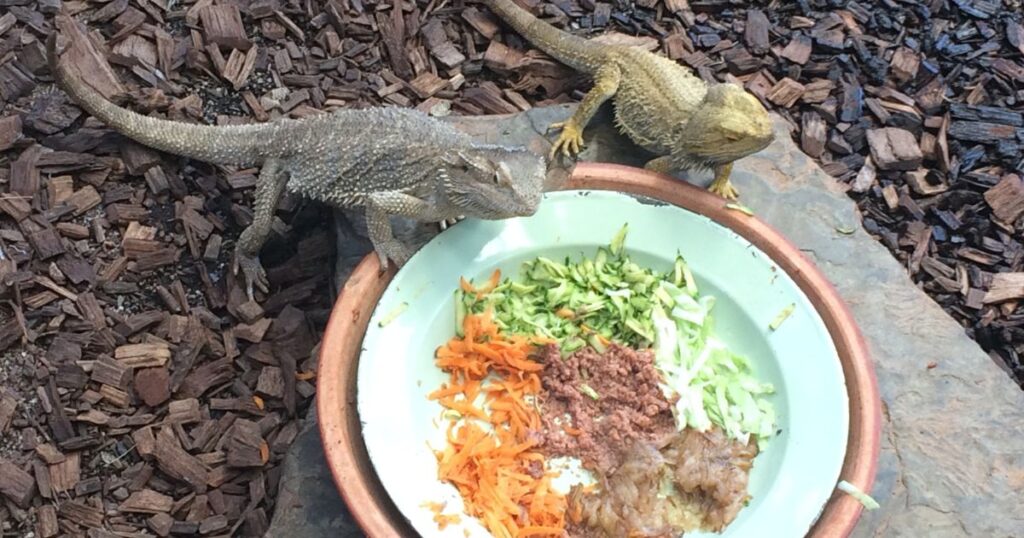
Fastest Ways to Hydrate a Bearded Dragon
| Method | Description |
|---|---|
| Bathing | Warm water can stimulate their thirst and encourage them to drink. |
| Misting | Water droplets on their skin can stimulate them to lick and drink. |
| Hydrating Foods | Foods high in water content can boost their hydration quickly. |
When it comes to hydration, time is of the essence. The faster you can hydrate your bearded dragon, the better. One of the fastest ways to hydrate a bearded dragon is by giving them a bath. The warm water can help stimulate their thirst and encourage them to drink.
Another fast way to hydrate a bearded dragon is by misting them with water. This can be especially helpful for bearded dragons who are reluctant to drink from a water dish. The water droplets on their skin can stimulate them to lick and drink.
One common misconception I’ve come across is that bearded dragons get all the hydration they need from their food. While it’s true that many fruits and veggies are high in water content, it’s not enough. Bearded dragons also need to drink water. Another misconception is that misting is not beneficial. In my experience, misting can be a great way to stimulate a bearded dragon to drink, especially if they’re reluctant to drink from a water dish. It’s all about finding the right balance and what works best for your bearded dragon.
Feeding them hydrating foods is another quick way to boost their hydration. Foods like cucumbers, bell peppers, and berries are high in water content and can be a great addition to their diet.
Tips for Quick Hydration
- Always use lukewarm water for baths and misting.
- Monitor your bearded dragon during baths to ensure they are safe.
- Chop hydrating foods into small, manageable pieces for your bearded dragon.
- Always provide fresh water in their enclosure.
Does Misting a Bearded Dragon Hydrate Them?
Misting is a common method used by many bearded dragon owners, but does it really hydrate them? The answer is yes, but it’s not the only method. While misting can help hydrate a bearded dragon, it’s also important to provide other sources of hydration, such as a water dish and hydrating foods.
Misting can be a great way to stimulate a bearded dragon to drink, especially if they’re reluctant to drink from a water dish. However, it’s important to remember that too much misting can increase the humidity levels in the enclosure, which can lead to other health issues. So, it’s all about finding the right balance.
Hydrating a bearded dragon is not just about water. It’s about creating an environment and diet that supports their hydration needs.
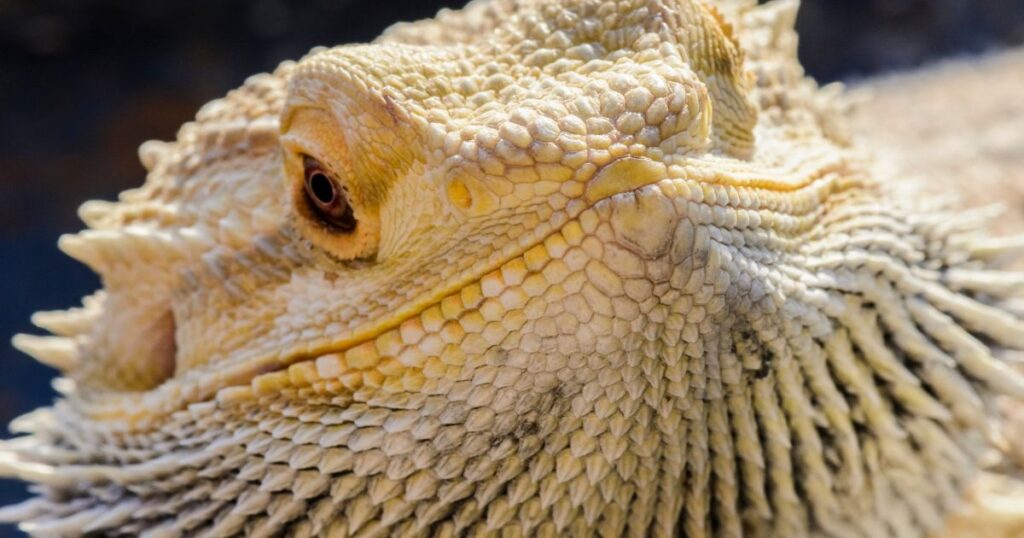
Conclusion
Hydration is key to a healthy and happy bearded dragon. Understanding the signs of dehydration and knowing how to prevent and treat it can make a big difference in your bearded dragon’s health and well-being.
We’ve covered a lot of ground today, from understanding dehydration in bearded dragons to exploring the fastest ways to hydrate them. I hope this information helps you in your journey as a bearded dragon owner. Remember, every bearded dragon is unique, and what works for one may not work for another. So, always observe your bearded dragon and adjust their care according to their needs.
If you want to learn more about bearded dragon care, check out the Bearded Dragon Care category. And don’t forget to check out my index page on Bearded Dragon Health Issues.
Posts of interest: Bearded dragon brumation-related health concerns and Bearded dragon digestive issues and gastrointestinal health
Disclaimer: This article is based on my personal experience and research. It’s always recommended to consult with a vet for professional advice regarding the health and care of your bearded dragon.
Frequently Asked Questions
How do you fix a dehydrated bearded dragon?
Fixing a dehydrated bearded dragon involves increasing their water intake, monitoring their environment, and providing a diet rich in hydrating foods. You can increase their water intake by misting their skin with water, providing a shallow water dish in their enclosure, or giving them a bath. It’s also important to ensure the humidity level in their enclosure is appropriate. Lastly, feeding them fruits and vegetables with high water content can also help rehydrate them.
What happens when a bearded dragon is dehydrated?
When a bearded dragon is dehydrated, it can affect their bodily functions. It can impact their digestion, skin health, and overall energy levels. A dehydrated bearded dragon may become lethargic, lose its appetite, and show signs of discomfort. In severe cases, dehydration can even be life-threatening.
What is the fastest way to hydrate a bearded dragon?
The fastest ways to hydrate a bearded dragon include giving them a bath, misting them with water, and feeding them hydrating foods. Bathing in warm water can stimulate their thirst and encourage them to drink. Misting can also stimulate them to lick and drink the water droplets on their skin. Foods like cucumbers, bell peppers, and berries are high in water content and can boost their hydration quickly.
Does misting a bearded dragon hydrate them?
Yes, misting a bearded dragon can help hydrate them. The water droplets on their skin can stimulate them to lick and drink. However, misting should be used in conjunction with other hydration methods, such as providing a water dish and feeding hydrating foods. It’s also important to note that too much misting can increase the humidity levels in the enclosure, which can lead to other health issues. So, it’s all about finding the right balance.
